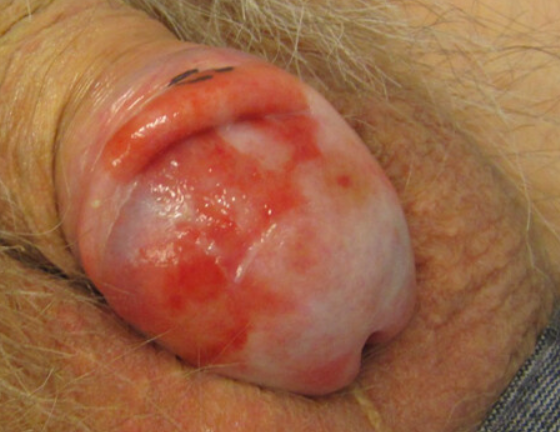Zoon plasma cell balanitis or balanitis circumscripta plasmacellularis is a rare chronic disease of the penis that affects middle-aged and elderly men. ICD-10 Code: N48.1
Zoon balanitis can occur at any age, but is typically seen in men over the age of 40, especially in uncircumcised individuals. The etiology is unknown. Predisposing factors include poor hygiene and chronic irritation from friction or heat.The disease is usually asymptomatic, although itching or dysuria may occasionally be reported. Clinically, it presents as single or multiple noncoalescing pink-brown patches with smooth, shiny, and sometimes exudative surfaces and small red dots on the glans penis. The patches often have a "cayenne pepper" appearance. In rare cases, erosions or vegetations may develop over the affected areas.
A characteristic feature is the localization on the adjacent and contacting surfaces of the glans penis and prepuce (kissing lesions). The condition is chronic and recurrent. Small erosions may slowly regress, leaving behind hyperpigmentation of a "rusty" color.
- Erosive form of lichen planus
- Erythroplasia of Queyrat
- Lichen sclerosus et atrophicus
- Circinate balanitis
- Squamous cell carcinoma
- Extramammary Paget's disease
- Balanitis

